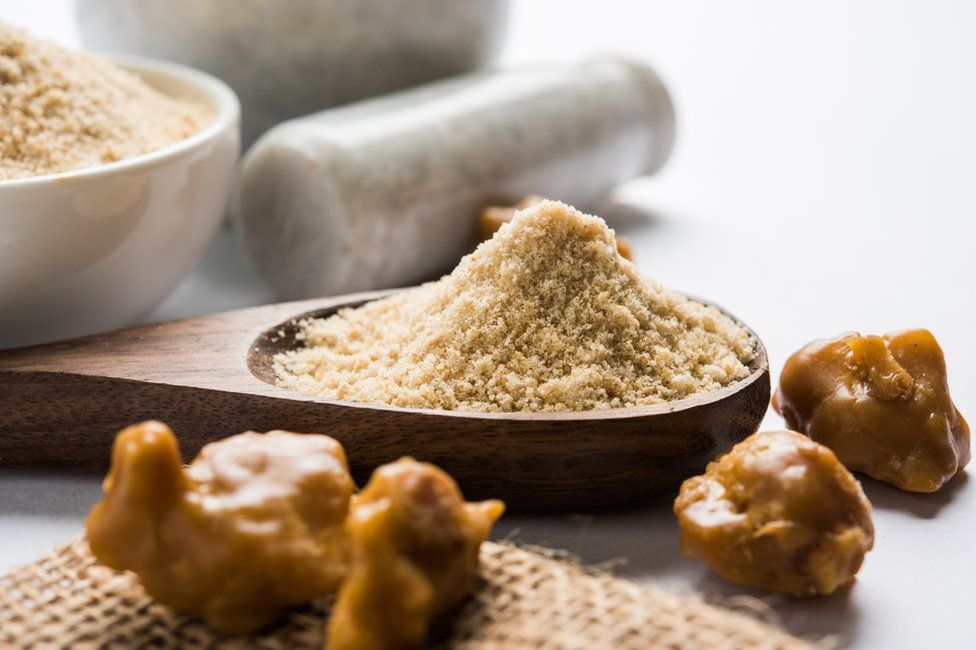Hing/Asafoetida is a spice from Iran, Afghanistan, and Turkistan. But it’s mainly found in India. It comes from an herb, the plants of which contain resin. The sap is extracted from the stems and roots of the plant, which hardens into brownish-yellow sap.

There is widespread controversy on the taste of raw hing., with some loving it, and others hating it. But, despite the strong smell, studies have found numerous benefits to this spice!
Hing is known by two names in English – asafoetida, and hing. Asa means resin, which is a Persian word, so the name of this spice came from that. Latin brought changes to the name with the word foetidus meaning smelly or fetid. The aroma of raw hing can be very strong, but when cooked in the right fat, such as ghee, the flavor becomes milder. Hing goes well with a variety of dishes, hinting at the presence of foods like sautéed leeks and onions.
For example, Durian is a fruit with a bad smell or a good smell, depending on what you believe. The smell comes from sulfur compounds which are generally mixed with substances to stabilize the fruit and make it easier to use.
Hing is an essential ingredient in Southern Indian vegetarian cooking. It can also be used as an alternative to onion or garlic for anyone following a low FODMAP diet.
Traditionally, ginger has been added to beans and other vegetables to combat gassiness. Add some to a large pot of soup when cooking for a more fragrant end product.
Add a pinch of hing powder and 1 TBSP ghee to a saucepan. Fry a colorful variety of vegetables; season with salt and pepper.
Add one tablespoon of butter to a saucepan. When it melts, add one tablespoon of curry powder and a splash of coconut milk. Add leafy greens that you have chopped up before.
Saute the eggs with a pinch of salt, hing, and one tablespoon of ghee or butter. Add any other vegetables you want to make it healthy.
One can also prepare rice by adding a pinch of hing powder to ghee, curry powder, and grains. Cook this mixture for a few seconds before adding broth or water to cook the rice.
Heat cooked chickpeas in a mixture of ghee and a pinch of hing. Add spices to taste such as salt, pepper, curry powder, turmeric, cumin, and coriander. The dish can be served over rice or quinoa.
Experiment with adding a little hing and ghee to your favorite onion-and-garlic-free pasta sauce for an alternate FODMAP-friendly version of marinara (FODMAP is a diet without the use of onions and garlic).
Try adding a little of Hing/Asafoetida and some turmeric to meat, or while tempering dal or even to any dish of paneer and experience the magic.
Thank you for reading this post, hope you found it interesting. Do leave your feedback on our website www.hiddenflavours.in and share this post with your friends and dear ones.
Thank you and stay tuned for more blogs coming up.
